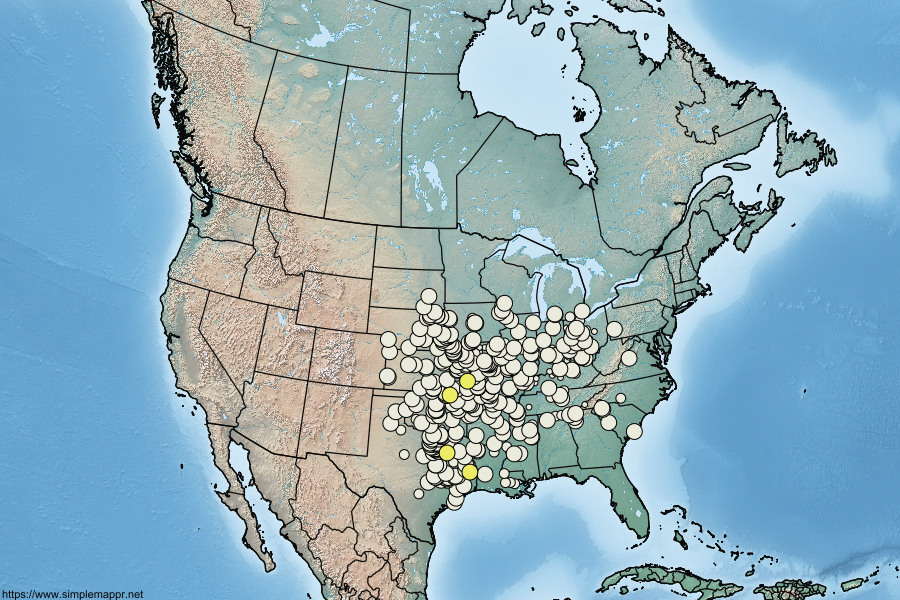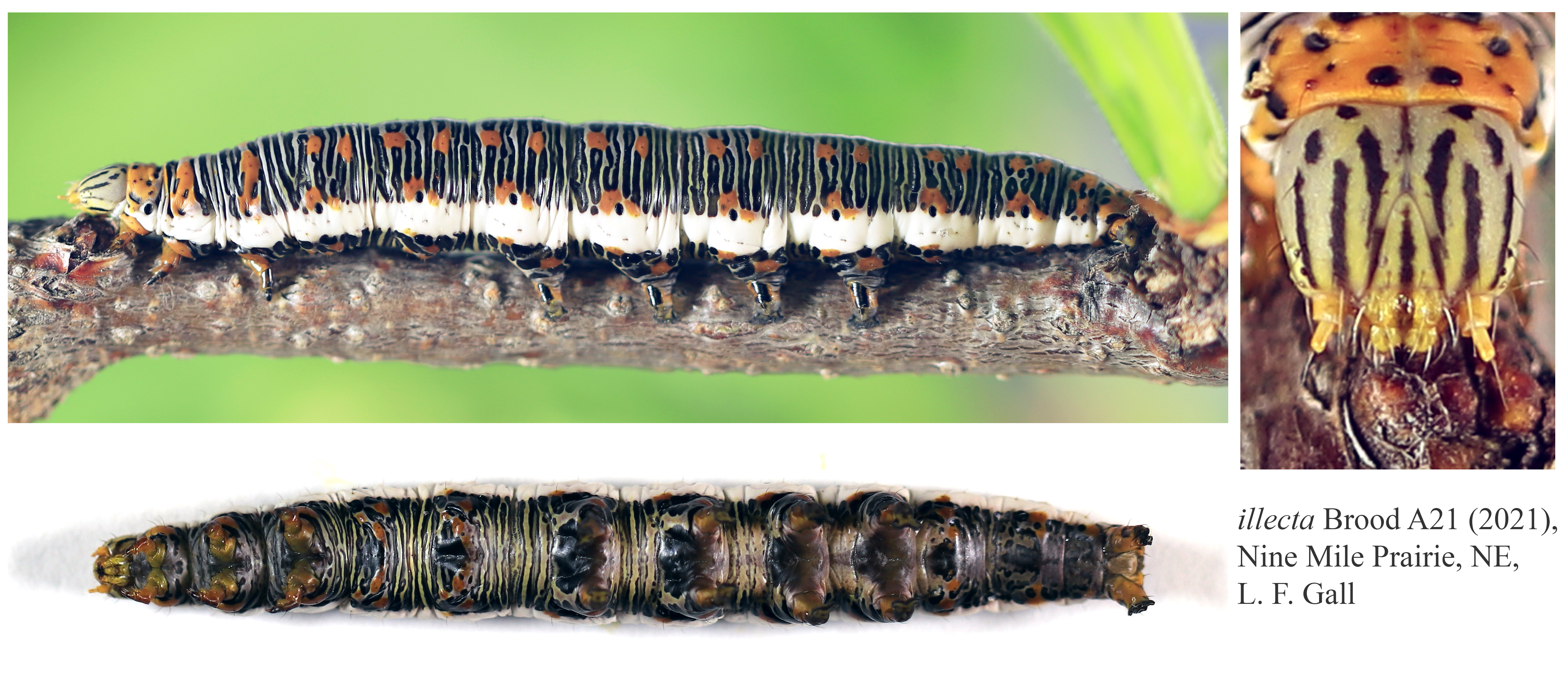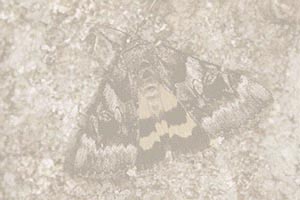 Catocala illecta
Catocala illecta
Walker, 1858
Three Catocala feed exclusively on Honey Locust (Gleditsia)
in the Nearctic,
illecta,
innubens and
minuta,
and they are quite different.
The mature larva of
illecta
is large and unique, with dorsolateral black circles organized concentrically (cf. front-to-back) on each segment; gaudy orange patches at pinnacula; wide
white lateral stripe; no lateral filaments,
mostly black venter; head capsule yellowish with dark stripes.
Larva of
innubens large,
whitish to gray or cream with sparse dark stippling; orange/red lateral racing stripe surrounded
above/below by darker stippling; prominent A5 patch with rounded bump; venter yellow, black spots on A3-A6; no lateral filaments, head capsule
light with pink/ochre tinge and darker stripes.
Larva of
minuta small, body color from light gray to black, frequently
patchy; prominent A5 patch with raised often white-tipped bump; modest lateral filaments, some multifurcate; head capsule grayish
with
darker striping, black spots on each lobe, black usually heavy from vertex to T1; venter whitish grey with black spots.
Both innubens and minuta present in urbanized environments owing to Gleditsia planting; illecta not so and
found in more open to prairie-like habitats. Mature larvae of
innubens and illecta often rest in duff around tree base or nearby, those of minuta in bark crevices.

|


